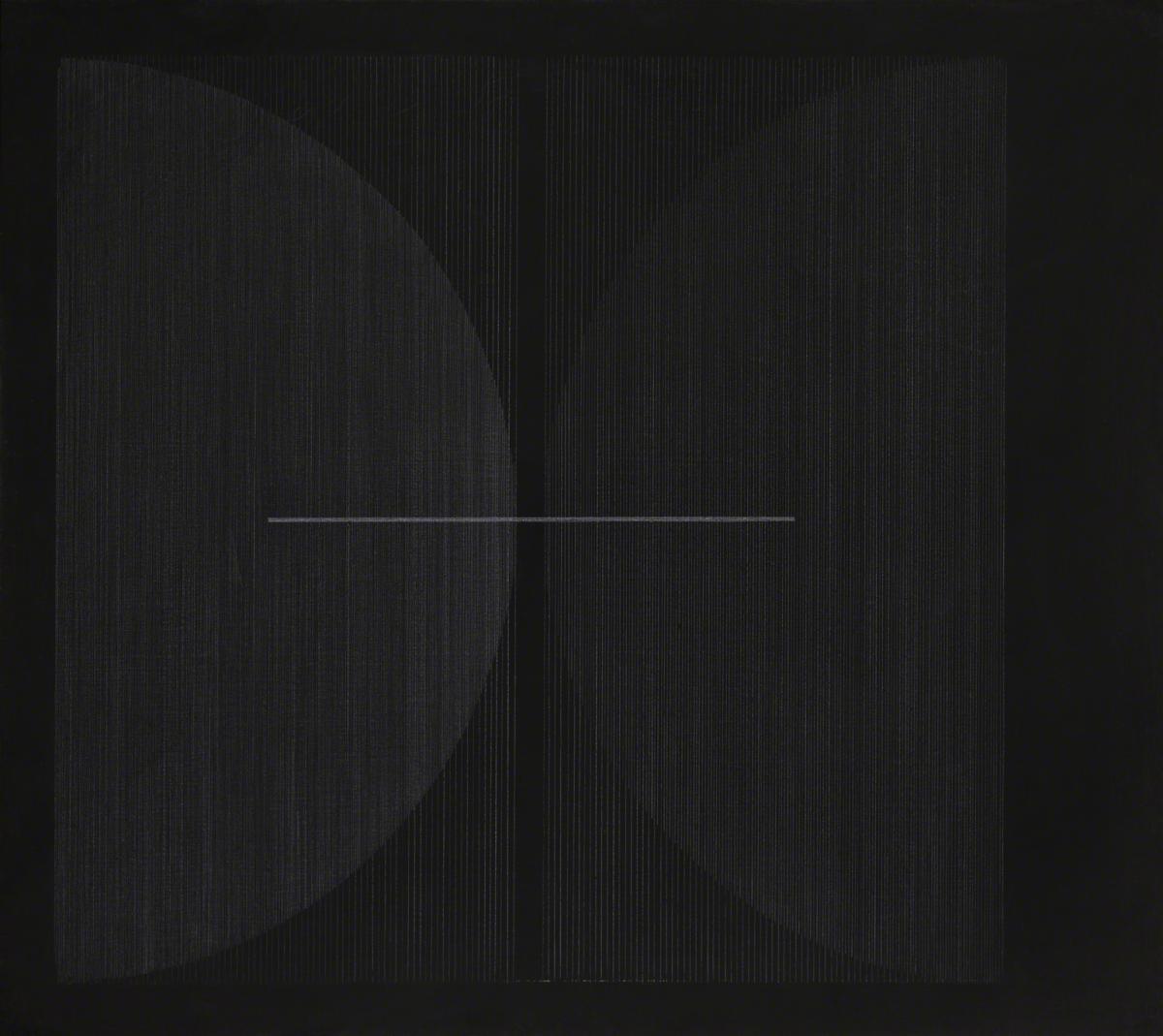Measures and Signs (Misure e segni)
Bice Lazzari ( 1967 )

Born in Venice in 1900, Bice (Beatrice) Lazzari was a pioneer in postwar Italian art. For most women in the early twentieth century, there were limited opportunities to pursue a career in the fine arts, but in Italy it was especially difficult between the wars. Lazzari was compelled to find an alternative path. Although trained as a figure painter, she began her career in the late 1920s in the applied arts, designing ceramic tiles and some jewelry, as well as textiles for pillows, rugs, curtains, and embroideries. In the postwar years, she made her permanent home in Rome, where she found her unique artistic voice. Although her early work in the applied arts was often geometric in style, her paintings of the 1950s were expressive and abstract, while her works in the 1960s and 1970s, though increasingly reductive, involved experimentation with materials and a singular focus on rhythmic mark-making. Measures and Signs, with its emphasis on minimal gestures, demonstrates the artist’s complete control.
Lazzari was not only a visual poet. She wrote equally expressively about her creative process in the pages of her notebooks
:Everything is rhythm and obsession, and this interchangeability gives me the right measure of order and, at the same time, intensifies my thoughts…These light lines, that run over the canvas and stop at a predetermined point, that little by little inexorably thicken and break, create a measure that repeats itself or not depending on my decision to reject or accept on a day-to-day-basis. Because listening carefully to a day’s rhythm is what works best. —Milan, 1967
In paintings and works on paper, Lazzari created poetic compositions that resemble graphs, maps, musical staffs, and notes. Later in her career she further simplified her imagery, as seen in Measures and Signs, creating grids, lines, rows of dots and dashes, and irregular shapes using a limited palette. Reflecting her lifelong passion for music and poetry, Lazzari’s lines and forms create rhythms that interact with each other, making her works come alive in a manner akin to musical notation.
A romantic spirit fiercely dedicated to pushing the boundaries of her art with unwavering discipline, Lazzari made her lifelong project a precise and solitary quest for new codes, expressive means and visual languages within the framework of painterly abstraction. Although little recognized in her lifetime, she remains underappreciated for her contributions to twentieth century abstraction even as she is today considered one of Italy’s most revered modern artists. The Phillips Collection was only the second museum in North America to recognize Lazzari’s unique voice and move to acquire her work.
Text by Susan Behrends Frank, adapted from Seeing Differently: The Phillips Collects for a New Century (The Phillips Collection in association with Giles, 2021)